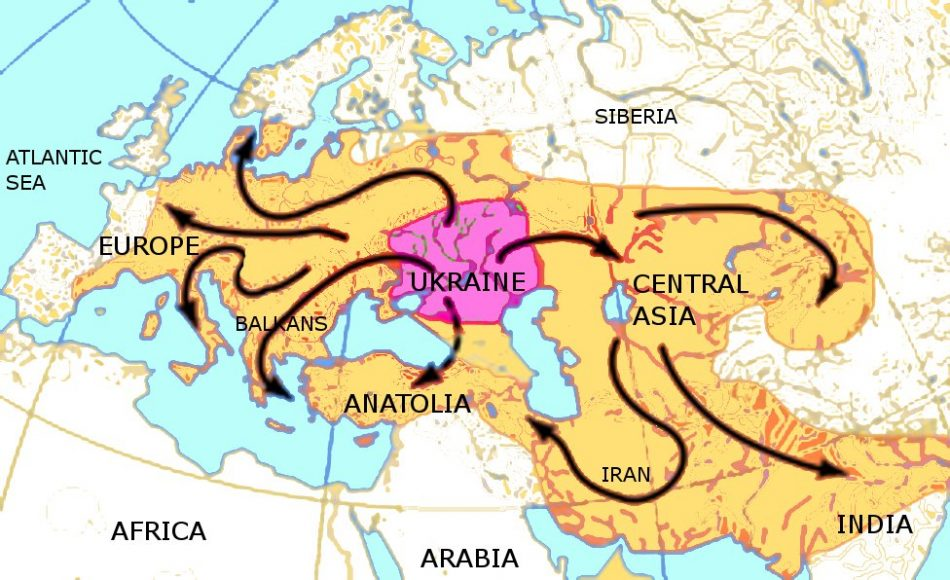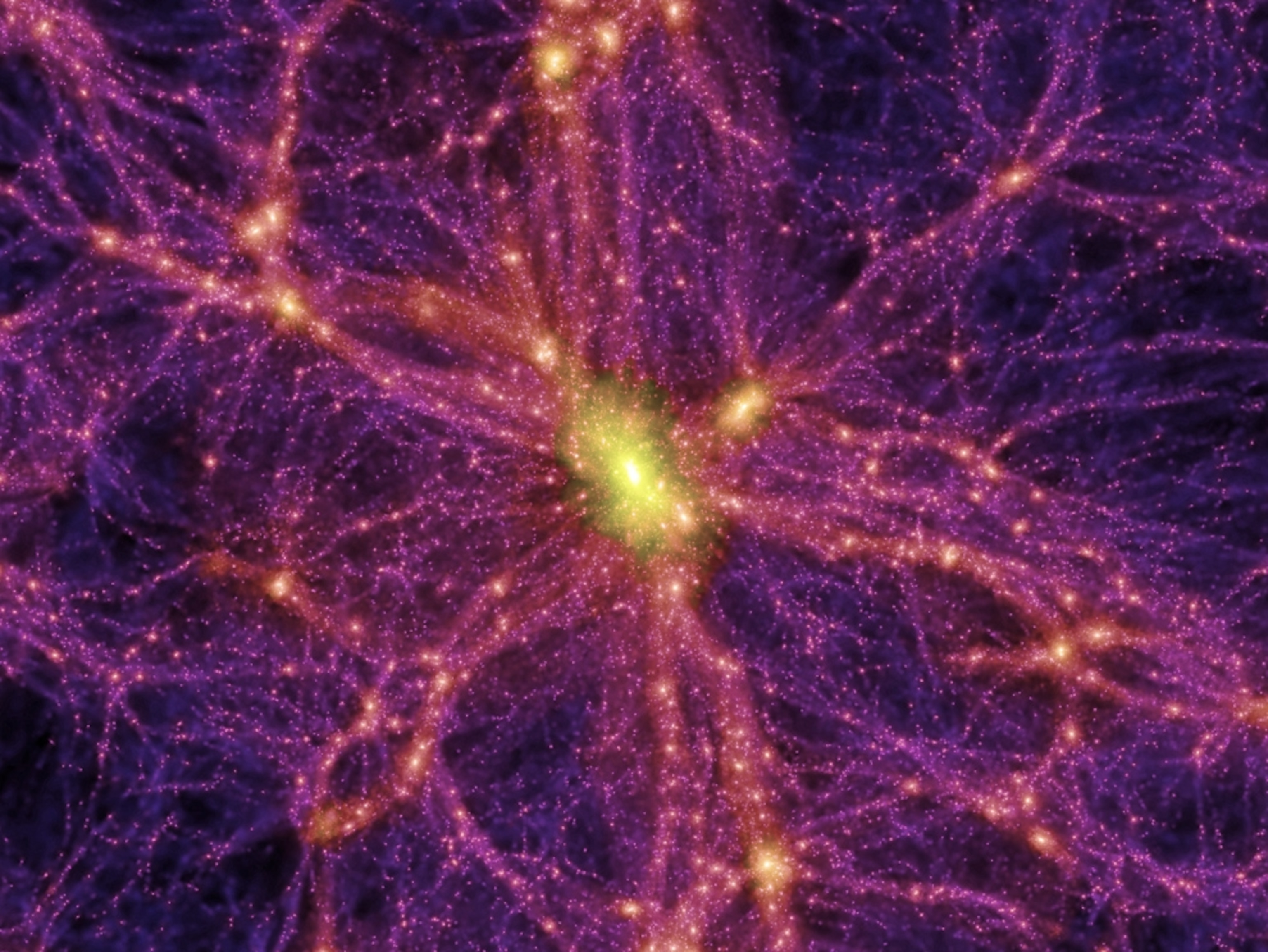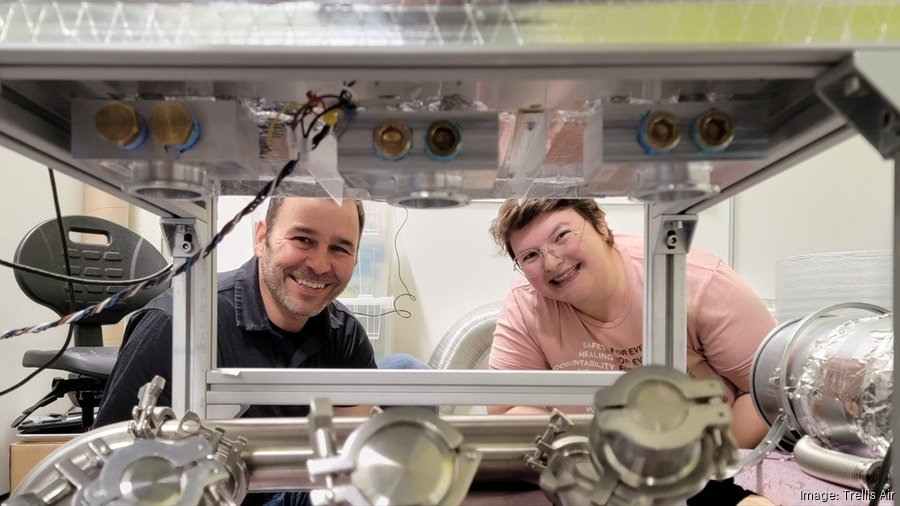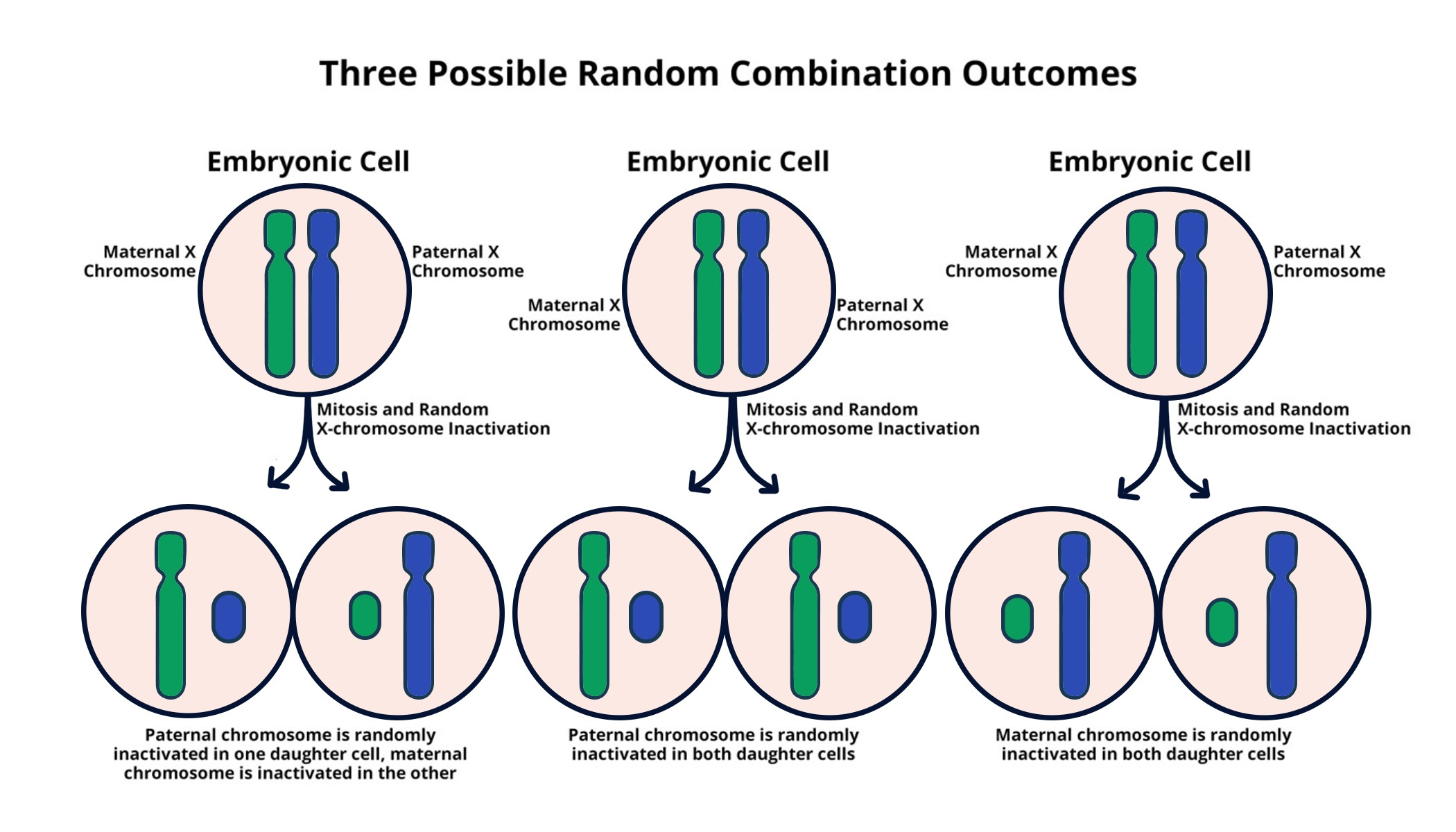The origin of Indo-European languages has long captivated linguists and historians alike, as it holds the key to understanding the roots of over 400 languages spoken today by over 40% of the world’s population. Recent groundbreaking research has traced these languages back to the Caucasus Lower Volga region in present-day Russia, approximately 6,500 years ago, highlighting the ancient Yamnaya people as key figures in this linguistic evolution. Utilizing advanced ancient DNA studies, researchers unveil how these proto-Indo-European speakers mixed with surrounding cultures, creating a rich tapestry of language that would eventually spread across vast territories—altering human communication forever. As scholars continue to explore this fascinating journey of language evolution, they uncover not only the histories of communities but also the profound impacts these early speakers had on future generations. The insights gained from these studies illuminate the intricate connections between language, culture, and genetics, inviting further inquiry into the Indo-European family.
Exploring the beginnings of the Indo-European tongue reveals a complex narrative of human history that intertwines language evolution with the movements of ancient peoples. The descendants of the Caucasus Lower Volga inhabitants, particularly the Yamnaya, serve as pivotal links in tracing how these languages spread throughout Europe and Asia. Recent genetic research sheds light on how this early population interacted with various groups, facilitating the exchange of ideas and cultures that shaped the world as we know it. This investigation into the ancestral languages illustrates not just the linguistic ties that bind us, but also the broader story of humanity’s migration and adaptation across diverse landscapes. Through this lens, the rise of the Indo-European languages is not merely a tale of words but a reflection of our shared human experience.
The Ancestral Roots of Indo-European Languages
The research conducted by a team of scientists has provided groundbreaking insights into the origins of the Indo-European languages, a family that encompasses over 400 languages currently spoken by a significant portion of the world’s population. By examining ancient DNA from the Caucasus Lower Volga region, researchers have traced back these linguistic roots to approximately 6,500 years ago. This discovery confirms theories regarding the historical migration patterns of the ancient populations, particularly the Yamnaya people, who spoke the ancestral tongue that eventually evolved into various Indo-European languages.
Historical linguistics has long speculated about the Indo-European family stemming from a singular ancient source, and this new genetic evidence substantiates such claims. The cultural practices, including the burial traditions shared by the Yamnaya people, underscore the interconnectedness of language and culture. As they moved westward, likely driven by various socio-economic factors, their languages spread through Europe and into the Indian subcontinent, evidencing the profound influence of the Caucasus Lower Volga communities.
Additionally, the significance of these findings lies not only in mapping the linguistic ancestry but also in reflecting the socio-political dynamics of ancient Europe. The mixture of the Yamnaya people with indigenous populations in their migratory paths facilitated the evolution of language. As these groups came into contact with different cultures, the ancestral Proto-Indo-European language transformed, branching out into numerous dialects. This emergence of diverse languages can be partially attributed to the mobility and economic strategies of the Yamnaya, who adapted their communications to their new environments.
The Role of Yamnaya People in Language Evolution
The Yamnaya people have been identified as key figures in the evolution of the Indo-European languages due to their extensive migrations across the Eurasian steppes. Their adeptness at horse riding and use of wheeled transport markedly enhanced their mobility, allowing them to establish trade routes and cultural exchanges with various populations. This profound mobility not only facilitated the spread of their economic practices but also contributed to the dissemination of their language and early cultural traditions. As they moved from the steppes surrounding the Black and Caspian Seas to regions as distant as Ireland and Mongolia, they left behind genetic and linguistic footprints that can still be traced today.
The innovations of the Yamnaya were not solely technological; they included significant shifts in social structures and cultural practices. The researchers highlight the importance of these cultural traditions as they transitioned into new lands. The Yamnaya’s burial customs, such as kurgan mound constructions, resonate across multiple Indo-European societies, implying a shared heritage that transcended mere language. This intertwined evolution of culture and language reveals how historical populations shaped modern identities and contributed to the vast tapestry of Indo-European languages.
The genetic studies reveal that the Yamnaya were part of a complex web of migrations and population changes, strengthening the hypothesis that they were fundamental in spreading the Indo-European languages throughout Europe and Asia. Through their interactions with local populations, they helped bridge linguistic divides, enabling the fusion of dialects and the creation of distinct language branches. Thus, the analysis of ancient DNA provides insights into the demographic changes that fueled linguistic evolution, shedding light on how historical narratives are constructed based on both genetic and linguistic evidence.
Ancient DNA Studies: Unraveling the Linguistic Puzzle
The advanced techniques in ancient DNA analysis have offered unprecedented access to understanding the past populations that contributed to the spread of Indo-European languages. The recent studies conducted by researchers at Harvard have mapped the genetic relationships of the Caucasus Lower Volga people and correlated these with linguistic data from various Indo-European languages. By analyzing the DNA of 354 ancient individuals, they have established concrete links between the early settlers of the region and later populations that emerged throughout Europe and Asia. This landmark research fills a critical knowledge gap that has perplexed linguists and historians for centuries.
Moreover, ancient DNA studies have illuminated the intricate patterns of migration, intermarriage, and cultural exchange that shaped the evolution of languages. The genetic evidence indicates a profound mixing event among different populations, aligning closely with the historical movements theorized in existing linguistic models. Such correlations bolster the understanding of how language evolution is intertwined with genetic lineage, allowing researchers to trace back the origins of modern languages to their ancient ancestors.
The collaborative efforts within the field of ancient DNA research highlight a significant advance in linguistics, archeology, and genetics. With these developments, scholars are piecing together a more cohesive narrative of the Indo-European language family. The cross-disciplinary nature of these studies showcases a future where linguists and geneticists work hand in hand. The recognition of ancient genetic markers extends beyond mere chronology, suggesting social dynamics, economic patterns, and even environmental adaptations played pivotal roles in linguistic transitions.
Cultural Traditions and Language Transmission
The interplay between language and culture is vividly illustrated through the lens of the Yamnaya people, whose burial practices and social customs reveal insights into their language transmission. The shared tradition of kurgan burials between the Yamnaya and newer groups highlights a continuity of cultural practices that likely facilitated language preservation and evolution as they dispersed into Europe. Through rituals and societal norms, language was not just a means of communication but an embodiment of cultural identity, encapsulating values and traditions that endured despite migration.
As the Yamnaya expanded their territories, they carried with them not only their genetic legacy but also their linguistic heritage. The intricacies of how language was spoken, learned, and adapted by neighboring tribes shed light on the mechanisms of cultural exchange and assimilation. Consequently, understanding these traditions is paramount to deciphering the evolution of Indo-European languages and how they came to reflect the unique regional identities and experiences of their speakers.
The ongoing research into the cultural aspects linked to the Yamnaya reveals that language evolution was profoundly affected by sociopolitical factors and environmental contexts. Languages adapted to convey complex social hierarchies, communal values, and local customs. Therefore, as the Yamnaya interacted with various cultures, their language also absorbed elements from indigenous tongues, leading to dialectical variations witnessed in modern Indo-European languages. This dynamic nature of language reinforces the idea that it is a living, breathing entity shaped by the tapestry of human experiences.
Continuity and Change: The Legacy of Indo-European Languages
The legacy of the Indo-European languages is one of both continuity and change, a narrative intricately woven through time and space. As researchers trace the roots of these languages back to the Caucasus Lower Volga people, they also uncover the evolutionary pathways that led to the emergence of diverse language branches across Europe and Asia. Each language carries echoes of its origins while simultaneously adapting to new cultural environments, showcasing the resilience and adaptability of human communication.
As the Yamnaya and other ancestral groups merged with local populations, the languages adapted, leading to a proliferation of distinct dialects and languages that we recognize today. The complexities of language evolution indicate that it is not merely a reflection of ancestral tongues but a product of social dynamics, migrations, and intercultural exchanges that occurred over millennia. The ongoing exploration of this linguistic legacy continues to inspire researchers as they delve deeper into the interconnected history of human language.
Language serves as a powerful marker of identity and cultural heritage, and the study of Indo-European languages illustrates how this identity has been preserved and transformed through generations. The initial linguistic landscape shaped by the Yamnaya and their contemporaries has given rise to a rich array of languages that encapsulate the histories and cultures of their speakers. This evolution also illustrates the interplay between historical events, such as migrations and invasions, that have fundamentally influenced the linguistic diversity we observe today.
Tracing the Pathways of Indo-European Migration
Understanding the pathways of Indo-European migration provides critical insights into the complex historical movements that shaped modern Europe and parts of Asia. The genetic analyses of the Yamnaya people and their descendance trace a narrative rich with interactions, alliances, and cultural exchanges. As these groups traversed vast distances, they carried their languages and assimilated elements from indigenous populations, which profoundly shaped the linguistic landscape of the regions they inhabited. By investigating these migratory patterns, researchers have begun to map out not only where languages spread but also how they transformed through contact with different cultures.
The significant distance traveled by these ancient populations, spanning from the southern Russian steppes to the British Isles, showcases the remarkable adaptability and resilience of language. Each migration wave contributed to the diversification of the Indo-European language family, leading to the emergence of distinct regional dialects and languages. Intra-group interactions often resulted in language shifts, borrowing, and the eventual development of entirely new linguistic forms, a phenomenon that continues to be of interest in contemporary anthropology and linguistics.
Moreover, the study of ancient migration routes challenges us to rethink traditional narratives that have often oversimplified the spread of languages. The interplay between genetic research and linguistic theory reveals a more nuanced picture, suggesting that migrations were not just long-distance journeys but involved various local adaptations and transformations influenced by existing populations along the way. This complexity highlights the significance of cultural exchange in the evolution of language, underscoring the necessity of integrating genetics, archaeology, and linguistics to fully appreciate the history of the Indo-European languages.
The Impact of War on Genetic Research
The ongoing war in Ukraine has had profound implications for genetic research, particularly concerning the studies of Indo-European languages linked to the Caucasus Lower Volga people and the Yamnaya culture. The geopolitical challenges have strained collaboration between researchers from different regions, complicating the analysis of genetic data crucial for establishing a clearer picture of language origins. The disruption has highlighted the fragility of scientific collaboration in the face of conflict, emphasizing the importance of international cooperation in advancing our understanding of historical populations and their languages.
Nonetheless, as research continues, it is crucial to acknowledge the resilience of the academic community. Researchers are finding innovative ways to work with the available data, maintaining their commitment to disentangling the complexities of linguistic and genetic lineages despite external pressures. This adaptive response demonstrates the dedication of scholars to illuminate the historical narratives that shape our understanding of the Indo-European languages, ensuring that the ongoing conflict does not overshadow the invaluable work being done to explore our collective past.
Furthermore, the challenges posed by war have led to a reevaluation of existing historical narratives and the methodologies employed in linguistic studies. New avenues for research are arising from the need to analyze data under different circumstances, prompting scholars to diversify their approaches and draw on comparative methods from other fields. This adaptability not only enriches the field of linguistics but also cultivates a broader understanding of the social and political dimensions intertwined with language evolution, ensuring that the legacy of the Indo-European languages remains a collaborative endeavor that transcends borders.
Future Directions in Indo-European Language Studies
The future of Indo-European language studies appears bright as technological advancements and interdisciplinary collaboration pave the way for new discoveries. With the continuous evolution of imaging and genomic sequencing techniques, researchers can delve deeper into the genetic underpinnings of ancient populations and their linguistic trajectories. The promise of further ancient DNA analyses will allow for more precise identifications of migration patterns, revealing previously obscured links between disparate language families within the Indo-European group. This trajectory of research not only has implications for understanding language evolution but also offers insights into the cultural dynamics of ancient societies.
Researchers are increasingly recognizing the power of interdisciplinary collaborations in driving innovative approaches to examining the history of languages. By merging insights from genetics, linguistics, archaeology, and anthropology, a more rounded understanding of the complexities surrounding Indo-European languages is emerging. Such an integrative framework allows for a richer interpretation of how languages adapt, evolve, and reflect cultural identities over time, underscoring the need for continued investment in collaborative research efforts.
The advancements in AI and machine learning will likely play a pivotal role in future studies of language evolution, helping researchers analyze linguistic structures and patterns across vast datasets. By employing advanced computational methodologies, scholars can uncover hidden correlations among languages that may point to shared origins and parallel developments in the Indo-European language family. This technological integration will enhance the precision of linguistic reconstructions and support broader investigations into how cultural interactions drove language evolution, leading to a more comprehensive understanding of the human linguistic experience.
Frequently Asked Questions
What is the significance of the Caucasus Lower Volga people in the study of Indo-European languages origin?
The Caucasus Lower Volga people are identified as the original speakers of the proto-Indo-European languages, dating back approximately 6,500 years in present-day Russia. Their genetic makeup provides vital evidence linking them to the evolution of the Indo-European language family.
How did the Yamnaya people contribute to the evolution of the Indo-European family of languages?
The Yamnaya people, descendants of the Caucasus Lower Volga community, played a critical role in the spread of the Indo-European languages around 5,000 years ago. Their nomadic lifestyle and advancements in herding and transportation helped disseminate these languages across vast regions from Europe to Asia.
What recent studies have advanced our understanding of the Indo-European languages origin?
Recent landmark studies, published in the journal Nature, utilized ancient DNA analyses to trace the origins of the Indo-European languages back to the Caucasus Lower Volga population, providing a genetic framework that supports long-standing linguistic hypotheses.
How have ancient DNA studies reshaped theories about Indo-European languages?
Ancient DNA studies have revealed genetic links between various populations, including the Yamnaya and Anatolian speakers, enhancing our understanding of how the Indo-European languages evolved and spread from their origin points in the Caucasus region.
What archaeological evidence supports the hypothesis regarding the Caucasus Lower Volga people’s role in the Indo-European languages origin?
Archaeological evidence, including burial practices like kurgans, correlates with genetic data and supports claims that the Caucasus Lower Volga people are pivotal to the origins of Indo-European languages, revealing cultural continuity over millennia.
How did the Yamnaya’s innovations impact the spread of Indo-European languages?
The Yamnaya were pioneers in using oxen-towed wagons and advanced herding techniques, which enabled them to migrate extensively and, in turn, spread their Indo-European languages across Europe and into Asia.
What areas are considered key locations in the study of Indo-European languages origin?
Key locations include the lowlands along the Lower Volga River and the northern foothills of the Caucasus Mountains, where the Caucasus Lower Volga people lived and which served as the linguistic epicenter for the Indo-European family.
How does understanding the Yamnaya people’s DNA help in tracing Indo-European languages?
Understanding the Yamnaya people’s DNA offers insights into the genetic ancestry of modern Europeans and other Indo-European speakers, helping researchers map how ancient populations contributed to the spread and evolution of Indo-European languages.
| Key Point | Details |
|---|---|
| Origin of Indo-European languages | Identified in present-day Russia among the Caucasus Lower Volga people approximately 6,500 years ago. |
| Research Significance | Reveals the origins of over 400 languages spoken by more than 40% of the world’s population. |
| Yamnaya People | Considered significant progenitors of the Indo-European languages with innovations in herding and transportation. |
| Genetic Evidence | Studies utilized DNA evidence to trace the movements and mixing of ancient populations. |
| Research Challenges | Ongoing conflict in Ukraine has fragmented collaboration among researchers. |
| Cultural Findings | Shared burial practices, like kurgans, link Yamnaya with their ancestors. |
| Future Implications | This unifying genetic picture aids understanding of migration and cultural diffusion among ancient societies. |
Summary
The origins of Indo-European languages trace back to a group known as the Caucasus Lower Volga people, who lived around 6,500 years ago in what is now Russia. Landmark research has uncovered this critical historical context, shedding light on how a single ancestral language diversified into the wide array of languages we recognize today. With genetic studies supporting linguistic patterns, scholars can now better understand historical migrations and cultural exchanges that shaped early human societies. This development in understanding the Indo-European languages origin marks a significant achievement as it combines linguistics, archaeology, and genetics to offer a comprehensive picture of our shared linguistic heritage.







